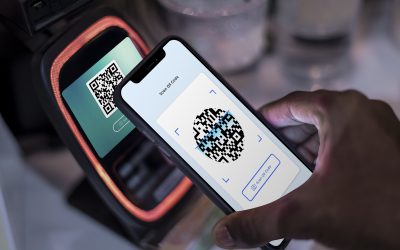
Keeping Cold Chains on Alert with IoT Analytics
COVID-19 vaccine shipments have just begun. Is the healthcare industry ready with an infallible cold chain?
With multiple COVID-19 vaccines on the horizon, the next challenge is a cold (supply) chain ready for the onslaught of shipping vaccines across the world. It will not be simple to implement, considering the number of transfer points from manufacturing to administration sites. Vaccines are typically transported by air and then by road (usually trucks), with multiple stops and storage at the distributor before reaching the endpoint, where they once again go into cold storage. The last mile to the healthcare provider could be delivered to a nearby town by any means available.
Almost a fourth of vaccines are degraded by the time they arrive at their destination, due to incorrect shipping procedures. Losses from vaccines exposed to temperatures outside the recommended range are estimated at USD 34.1 billion annually, including product cost and wasted logistics expenses; a number that is likely to increase exponentially if you consider the cost of wasted COVID-19 vaccines.
Cloud platforms, blockchain, and IoT-enabled monitoring sensors provide real-time visibility into temperature changes once the vaccines leave the labs or manufacturing facilities … and the opportunity to check before there is damage.
IoT can transform cold chain management
Cold chains can collapse due to mechanical failures, heavy traffic, human error and even theft. IoT also helps the entire cold chain infrastructure function as a single unit, bringing in new levels of safety and cost-efficiency.
Using GPS-enabled packaging material, or by attaching RFID sensors to the actual shipment, loading device or crates makes it possible to measure the temperature, humidity and other variables affecting the shipment.
IoT devices transmit this data in real-time, sending alerts or notifications to various stakeholders when conditions are compromised. Supported by predictive and descriptive analytics, logistics firms can make any necessary adjustments to maintain the integrity of the vaccines, and even initiate a lockdown in case of theft.
How IoT devices work in the cold chain
IoT sensors can read light, temperature and humidity, in addition to manufacturing details like serial numbers. Armed with this data, vaccine manufacturers can specify rules such as temperature bands and program them into the sensors. The system can send alerts for deviations from the specified temperature range as well as the location of the shipment. Similarly, when a hospital receives the vaccine shipment, it can check the dashboard to view the chain of custody and other details thanks to the data stored in the sensors and accessible via the cloud. So even if the manufacturer missed/ ignored an alert about the vaccine being unusable, the hospital can reject the shipment because the logistics firm messed up.
Another method is to use scannable barcodes. IoT-powered barcodes can upload information to a cloud-based blockchain system. Barcode tags can monitor details like aggregate time outside the specified temperature band, and return a message to the scanner within seconds, confirming the safety of the vaccine or suggesting safety measures.
Unlocking cold chain insights
When equipped with timely and relevant data, pharmacos can optimize inventory and ensure safe vaccine distribution. Data gathered by IoT devices and sensors can be integrated with other external data for deeper insights to automatically trigger action without human intervention. The data gets processed at the edge of the network at the device level or local level. Cloud-based solutions can process tons of data generated by IoT, AI/ML and advanced analytics to deliver diagnostic and predictive insights in real-time for location, condition, consumption and anomaly detection.
Closing thoughts
Fail-safe cold chains are essential to distributing vaccines because any inefficiency could mean losses worth billions of dollars, or losing ground in the fight against a pandemic. In response, companies are now adopting technologies to better monitor cold chain shipments, improve logistics management, and achieve near-perfect visibility into the transportation process. They are now able to introduce the necessary checks and measures early on. Such data insights can also help build stronger networks and more resilient processes. For example, data can reveal underperforming or problematic partners, allowing companies to find better suppliers and service providers to be part of their cold chain.
If you would like to learn more about how analytics can help transform your cold chain, get in touch for an open discussion with our experts. Speak to us today
Related Posts
AI Toolbox: Creative Content Beyond ChatGPT & BARD
Introduction: In the dynamic landscape of artificial intelligence (AI), ChatGPT and BARD have garnered significant attention for their capabilities in natural language processing and music composition. However, a rich tapestry of AI tools exists...
Ethical Considerations in Generative AI: Ensuring Fair and Responsible Data Analytics
Introduction Generative AI, a transformative subset of artificial intelligence, is revolutionizing data analytics and machine learning. It empowers machines to generate data, images, and text that mimic human creativity. While the potential of...
Building a Better Future with Digital Public Goods
The world is on the cusp of digitization! In this era of digitization, we have transformed the way we communicate, interact, and access information. It has not only changed our personal lives but also has brought an evident transformation in the...
The Role of Artificial Intelligence in Cyber Security
In an era characterised by rapid technological advancements and increasing digitalisation, the field of cyber security faces an escalating and ever-evolving threat landscape. As cyber threats become more sophisticated, organisations must employ...
TinyML: The Future of Edge AI
Artificial intelligence (AI) has been a hot topic in recent years and with good reason. AI has the potential to transform countless industries and improve our lives in numerous ways. However, as powerful as AI can be, it also requires a lot of...
The Evolution of Federated Learning
Uber settled an inquiry into a data breach that exposed the personal data of more than 5,00,000 drivers in 2016 by paying $148 million. A GDPR breach resulted in a $57 million fine for Google in 2020. On-growing data privacy and data breach issues...
Subscribe To Our Newsletter
Lorem ipsum dolor sit amet, consectetuer adipiscing elit. Aenean commodo ligula eget dolor. Aenean massa. Cum sociis natoque penatibus et magnis dis parturient montes, nascetur ridiculus mus

Company
About us
Careers
Contact
Awards
Blog
Offerings
Strategy & Consulting
Managed Services
Solutions
Digital Public Goods
Solutions
Data Solutions
Industry Solutions







